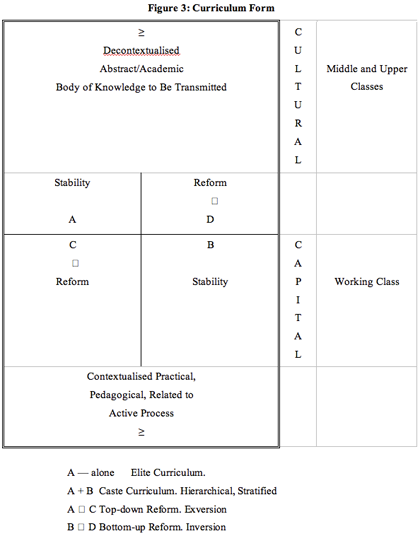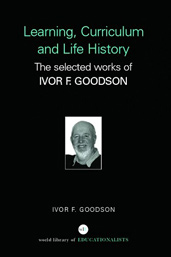Learning, Curriculum and Life Politics: the selected works of Ivor F. Goodson
On Curriculum Form
Comprehensive schooling limited all these separate types of schooling ‘under one roof’. The class-based recruitment to the three types of school was thereby challenged by every child to have the same ‘equal’ opportunity to attend the same, comprehensive school (notwithstanding those ‘children of rich’ parents who continued to go to private schools). But the results of this reform were less substantial when internal patterns were established. For inside the comprehensive school the old tripartite system was re-established with a pattern of horizontal differentiation (see Figure 2).

In many cases the bottom two categories effectively merged: the crucial distinction was between academic and non-academic subjects. Pupils were categorised quite clearly along these lines as 'academic' and 'non-academic' students. Close studies of the reform of schooling from tripartite to comprehensive, affords an opportunity for scholars of curriculum history to reconceptualise curriculum reform. Reform therefore provides a 'matrix of possibility' when the conflict over whether to redefine or simply re-negotiate differentiation takes place:

